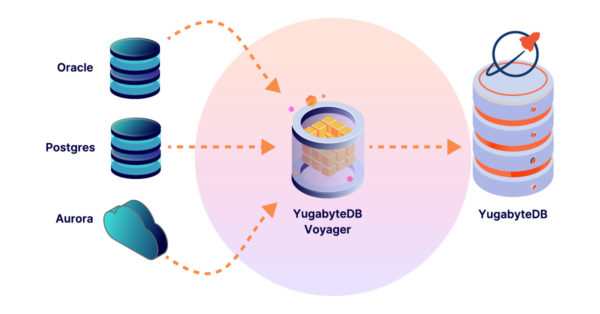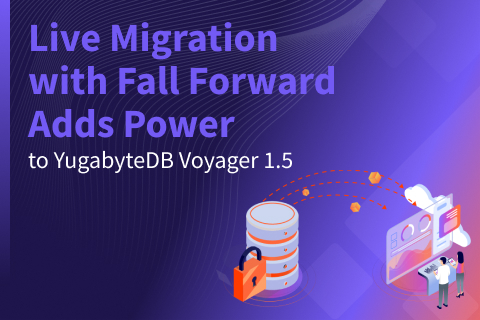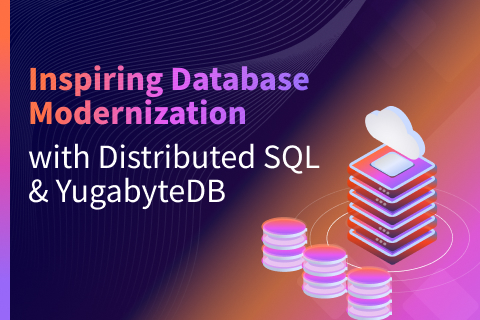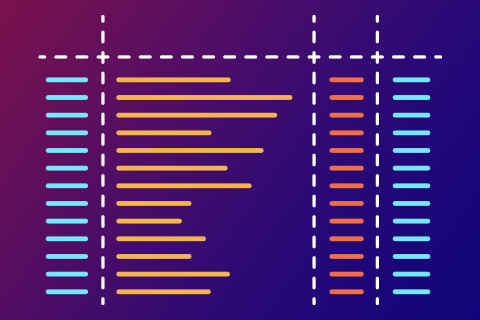Simplify Database Migration with New YugabyteDB Voyager
We are thrilled to announce the general availability of YugabyteDB Voyager. The arrival of this database migration tool is another major step forward in our vision to deliver a comprehensive, end-to-end migration solution that can simplify your journey to a cloud native architecture. With YugabyteDB Voyager, organizations—no matter the size— can evolve past the limitations of legacy or single-cloud databases and accelerate their database modernization.
Built on a powerful data migration engine, YugabyteDB Voyager quickly and safely migrates data from both common legacy databases—Oracle and MySQL—and popular single-cloud databases—Amazon Aurora PostgreSQL and Azure Database for PostgreSQL—to YugabyteDB.
YugabyteDB Voyager manages the entire database migration lifecycle, including cluster preparation, schema migration, and data migration. The new product is free, 100% open source, and supports moving data to any version of our database—YugabyteDB Managed, YugabyteDB Anywhere, and YugabyteDB.
Database Migration Requires a Comprehensive Vision
Most enterprises recognize the challenges inherent in their existing databases and are actively developing a strategy to modernize their data layer. Distributed SQL is quickly becoming the preferred choice thanks to its ability to provide transactional consistency and high performance with rapid horizontal scalability and continuous availability. We are actively engaged with a Fortune 100 bank that is actively migrating thousands of databases from Oracle to YugabyteDB. This will allow them to be free of Oracle costs and challenges by 2033.
As organizations prioritize application modernization and multi-cloud initiatives, many of them find these projects stall due to the complexity of moving the underlying data to a modern data platform. The business has to continue to connect their modern apps and microservicers to a legacy data architecture, leading to lower productivity, increased risk, and higher operational costs. So what can make the process easier?
- One, simple migration control plane: You need a unified solution that can provide an easy, reliable migration regardless of the source you’re migrating from, whether it’s Oracle or a single-cloud database like Aurora.
- End-to-end lifecycle: You need a product that spans the end-to-end lifecycle of migration, including planning, assessing, migrating, verifying, and application cutover and optimization. It should also support both offline and live migrations, as well as deliver failback capabilities if needed.
- Database portfolio migration: You need to look beyond migrating a single database. We understand that enterprises don’t look at database modernization one database at a time. They have hundreds or thousands of databases to move. How do you manage this overall portfolio assessment and planning in the database migration engine? Our goal is to make this a managed process that helps you stage, plan and execute on this migration over months or even years.
These three points encompass our long-term vision, and we are rapidly working towards it. Let’s get into the details of what YugabyteDB Voyager can do today, and why it is a major step in delivering this vision.
End-to-End Migration with YugabyteDB Voyager
Let’s look at how migration works with YugabyteDB Voyager. Then let’s explore the specific capabilities that are available today in the first release.

YugabyteDB Voyager is designed to manage the complete database migration lifecycle to simplify and automate data migration from legacy and single-cloud databases to YugabyteDB. It is based on consistent, well-defined stages, each providing specific status information and guidelines on the next step in the migration process.
Comprehensive Database Migration Process Support
There are six major steps in this proven migration journey. Every one is powered by YugabyteDB Voyager.
- Prepare: Install YugabyteDB Voyager with the one-click installer that now supports air-gapped and docker-based installations. Verify that the user has sufficient privileges and connectivity to both source database(s) and YugabyteDB.
- Analyze Schema: Export the schema and then generate a Schema Analysis Report to review suggested changes. Make the necessary schema adjustments to properly support a distributed database environment. Rerun analysis as needed on updated schema.
- Export Data: Export data into local files on the machine that has YugabyteDB Voyager installed.
- Import Schema: Import the ready schema to the YugabyteDB database. Note: safe defaults are ‘on’ by default, so that indexes are created only after data loads, foreign key checks are disabled, and triggers are created but disabled.
- Import Data, Indexes and Triggers: Import the data into the target YugabyteDB database and, once complete, import the indexes and triggers. Then at last verify (currently this is a manual step by comparing source and target databases).
- Verify and Optimize: Once the migration is complete, verify that the source and target databases are correct. For migrations to YugabyteDB Managed, leverage the included Performance Advisor to intelligently optimize indexes, queries, schema, and more for enhanced performance.
YugabyteDB Voyager Capabilities
To deliver on these migration steps, YugabyteDB Voyager provides the following capabilities:
- Free and 100% open source
- Unified CLI (command line interface) experience for all source databases
- Support a wide set of source databases, including Oracle 11g – 19c, PostgreSQL 9.x – 11.x, MySQL 8.x, MariaDB, Amazon Aurora PostgreSQL, Amazon RDS for PostgreSQL, Azure Database for PostgreSQL, and Google Cloud SQL for PostgreSQL. View the full list of supported source databases on the YugabyteDB Voyager Docs Page.
- Offline migration with source database remaining operational during most steps to minimize downtime (online migration on the roadmap)
- Built-in resiliency which can resume data import in case of failures
- One-click installer for simple download and installation, now supporting air-gapped environments and docker-based installations
- Direct data import from CSV files
Highlights from Beta Customers
After announcing the beta of YugabyteDB Voyager in June 2022, we worked with several companies to test and demonstrate Voyager’s capabilities. Below are a few of the user success stories. We look forward to hearing about your migration successes in the future.
- Multinational sports and entertainment media group: Their Streaming API application, which is responsible for tracking streams and related information, runs on a single PostgreSQL database instance. As a result, the app is limited and faces issues ranging from connection count limits to latency issues to availability. They incur downtime every time they scale the database. As they embarked on a database modernization initiative to address these challenges, they decided to adopt YugabyteDB. Through early tests of YugabyteDB Voyager they were able to easily connect to their PostgreSQL instance, make zero to minimal changes to their source database, and see a clear path forward to a more modern data layer.
- Interactive marketing company: Genxlead is a leader in advertising and marketing services, where they focus on delivering innovative, data-driven services. They depend on a powerful data layer to process the transactional batch data coming from different marketing agencies and providers across their growing portfolio. They selected YugabyteDB Managed as their future database because of its scale, performance and operational simplicity. Madhan Kumar, the founder of Genxlead, shared that “to simplify the migration from our legacy databases, we were excited to embrace YugabyteDB Voyager. We completed a successful PoC that allowed us to load 120M records with YugabyteDB Voyager.” They are now gearing up to move their production workloads with YugabyteDB Voyager.
- Web3.0 infrastructure company: This company allows users to deploy and run their own blockchain nodes on any infrastructure you choose. They were testing the migration of their community blockchain database—running PostgreSQL 13 on premises—to YugabyteDB Anywhere using YugabyteDB Voyager. Their database size was over 4.4TB and included a single table with more than a terabyte of data. Post-migration they plan to connect YugabyteDB with their Helium application and test the query performance, scalability and data export from YugabyteDB to different customers through YugabyteDB Voyager.
Technology partners in the space also quickly recognized the value YugabyteDB Voyager brings to companies looking to accelerate their cloud native adoptions. Partners like Insight Technology and SRA OSS have both been vocal in supporting the launch of Voyager. You can read what they have to say on our YugabyteDB Voyager Product website.
Get started and learn more
We’re excited to make YugabyteDB Voyager generally available. We believe this is a big step forward in accelerating and simplifying your adoption of distributed SQL databases.
For organizations lacking the in-house skills (or time), the Yugabyte Customer Success (YCS) team is here to help with database migration. Their mission is to guide you to success, from the early stages of considering YugabyteDB adoption, through migration and modernization, and beyond. For additional information about our portfolio of YCS services, contact us today.
We invite you to learn more or try out YugabyteDB Voyager for free today:
- Download the YugabyteDB Voyager product brief
- Access the open source project at Voyager on Github
- Learn more at YugabyteDB Voyager Docs Page


